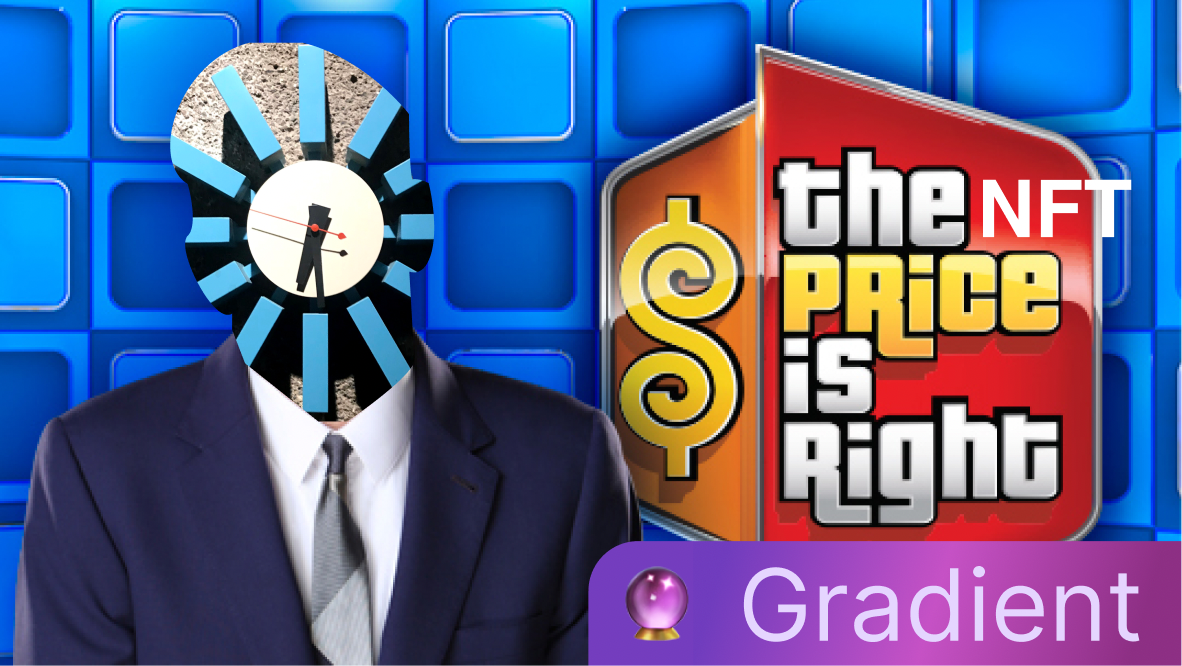Disclaimer: I’m with Gradient Protocol, an NFT lending protocol, and we work closely with some protocols named, but I’ve tried to be as objective as possible in this piece.

There’s certainly been a great deal of buzz around NFTs and DeFi. It makes intuitive sense – the lack of financial primitives around NFTs have ensured that NFT holders are very limited in what they can do with their NFTs.
This can and likely will be another entire article in and of itself.
If an NFT owner wants to free up working capital for example, they need to sell their NFT or leverage OTC liquidity if they can do so.
There are three key primitives that need to be solved before NFTs can really become more prevalent in DeFi:
- Oracles - the ability to receive pricing information on an asset
- Lending - the ability to access secondary liquidity for that asset
- Swaps - liquid markets to swap between one asset to another
As the saying goes “the rest is just commentary.”
There is a high degree of overlap between these solutions – for example Uniswap v2 and v3 oracles are extensively used in DeFi despite the primary purpose of Uniswap being exchange oriented.
ERC-20 + AMM
The first and the simplest approach to NFT pricing is the combination of ERC-20’ing the asset plus AMM liquidity, whether it be via fractionalization a la Fractional, or 1:1 conversions as with NFTX.
One notable example of this is with NFTX vaults where after depositing their NFTs into the NFTX vaults and receiving the ERC-20 representing the NFT. They can then provide liquidity on Sushiswap for the ETH:$NFT pair.
There are several drawbacks with this approach.
First and foremost is that this is only good for floor assets. If you have a Zombie Punk, with this approach, you’re out of luck unless you’re feeling awfully charitable.
Second, is that the lack of liquidity can mean that these pools can be manipulated easily. For example, the BAYC vault token has only 382k worth [1] of liquidity on Sushiswap, despite being one of the most liquid NFT collections.[2]
For holders of these more liquid collections, despite all of these issues, this approach would likely be the top choice for these borrowers, as a) not only do floor assets generally dominate collections (anywhere from 50-75% of the items), but b) the depth needed wouldn’t be as large since most borrowers are not borrowing in size given the distributed nature of many collections.
FloorDAO is looking to address this issue via sweeping and bonding, this is an approach that is limited in its scalability since it is curated by gFloor holders.
Finally, there can often be a spread between the NFT price and the price quoted by NFTX/offered by the pool oracle. This can be due to a variety of reasons, ranging from a lack of arbitrageurs/poor liquidity for a collection, and – this is more of an issue that afflicts NFTX – stolen assets within the pools (which cannot be sold on Opensea).
Pros: Most widely used method right now (~30 million in locked liquidity)
Cons: Low liquidity, only usable for floor NFTs
Leveraging the Sudoswap AMM
Sudoswap, for the unaware, is a protocol dedicated to enabling a Uniswap V3 like experience for NFTs by allowing for concentrated liquidity to act as sell/buy orders.
It remains to be seen how an oracle based upon Sudoswap can take on a large amount of depth, given the highly nonfungible nature of the pools, even for some of the more liquid collections. Uniswap V3 oracles can avoid this exact issue by having a significant amount of liquidity to make manipulation more difficult since it makes harder for liquidity to be pushed out of range. For verified pools on Rari Fuse to be verified for example, at least 1 million USD in full range liquidity for Uniswap V3 is required.
In addition, in contrast to the ERC-20 + AMM approach, the NFTs remain as ERC-721s, and don’t face the issues with having a spread on the actual NFT’s price since it doesn’t involve the fractionalization step.
Pros: It’s more direct as Sudo deals with ERC-721s
Cons: More prone to oracle manipulation, and not designed for usage as an oracle
Chainlink Oracle:
The tried and true method of relying on Chainlink Oracles can also be applied for NFT pricing as well.
Jpeg’d for example relies on Chainlink to provide a TWAP of the floor price to both Bored Apes and Punks. Additional care needs to be taken to exclude wash trades, or other attempts to manipulate price, but this is certainly a solvable issue.
One note to this approach is that it’s limited to only the most liquid of collections: Bored Apes, Punks, and perhaps other collections.
Pros: Reliable, most readily available to integrate into DeFi
Cons: Limited to floor assets on only the most liquid NFTs
Off-Chain Analysis:
Off-Chain analysis can encompass a wide variety of techniques to analyze the data.
NFTBank and Upshot for example use ML in order to extract features from select popular NFT collections to form estimates.
Goblin Sax (fka Gringotts DAO) takes a similar approach in taking in on-chain data, but since they’re focused on lending, they also look toward historical data from lending platforms such as NFTfi and Arcade.
The key drawback to this approach is that due to the more advanced nature of this analysis, the process to achieve this data is centralized. NFTBank for example, has an internal model that they run for NFT pricing.
This is in contrast to a solution like Chainlink pricefeeds, where multiple sources can provide data to corroborate to output the price of ETH in USDC for example.
Pros: Iteratable, most correct
Cons: Can be reliant on a single source to do the analysis, more probabilistic
Abacus Spot
Finally, there is Abacus Spot, which leverages optimistic staking to appraise individual NFTs on a continual basis by relying on locked liquidity pools. The NFT in question can be deposited and thus auctioned off if the owner decides that the Spot price is over the perceived market value. This is an abbreviated explanation of Spot, but a better explanation can be found here.
One key benefit of Abacus Spot is that it doesn’t rely on a specific valuation mechanism, instead choosing to index the decisions of LPs on the spot who can deploy strategies mentioned above to maximize returns. This also means that Abacus Spot is broadly applicable to any asset, grails, 1/1s, and especially assets outside the realm of art. This is reminiscent of the multi-armed bandit, which allows for the most optimal strategies to bare out as time progresses.
The one key drawback to Abacus spot is the capital efficiency.
Although stakers in an undervalued pool stand to benefit from the significant windfall in the scenario that the NFT is overvalued, the pool would need to overvalue the NFT for this to occur. This is unlikely as the price would need to reach a price that the owner decides is overvalued, which counteracts the large upside from being within the pool.
This means that outside of the long tail probability that the NFT owner decides to deposit and provide depositors upside – the only native yield is in the form of the ABC token, the governance token of the Abacus Protocol.
Pros: Backed by ETH, applicable to a wide variety of assets
Cons: Capital intensive, finer pricing resolution is difficult given the 1 week minimum lockup time, although the need for this is debatable.
Conclusion
In sum, there’s still a significant amount of work to be done in improving the current field of oracles with rights to NFTs. It’s extremely difficult to dynamically price illiquid assets, and all of the approaches outlined have limitations in one form or another that don’t allow them to be strong enough to allow for a robust pricing.

Or is there? As mentioned above, the high degree of overlap for these primitives opens up new possibilities, which we will explore why lending is so key to accurate NFT pricing in the part 2 to this piece.
Quick thanks to Chris at Goblin Sax, 0xRusowsky, George Beall, and a few others for providing suggestions and proofing this before publication.
[1] for some reason the Sushi website acts weirdly when you open the link, so you’ll have to take my word for it.
[2] I omitted Punks which have a Sushiswap pool with 7.5 mil in liquidity as of writing, however this is more of the exception rather than the norm.